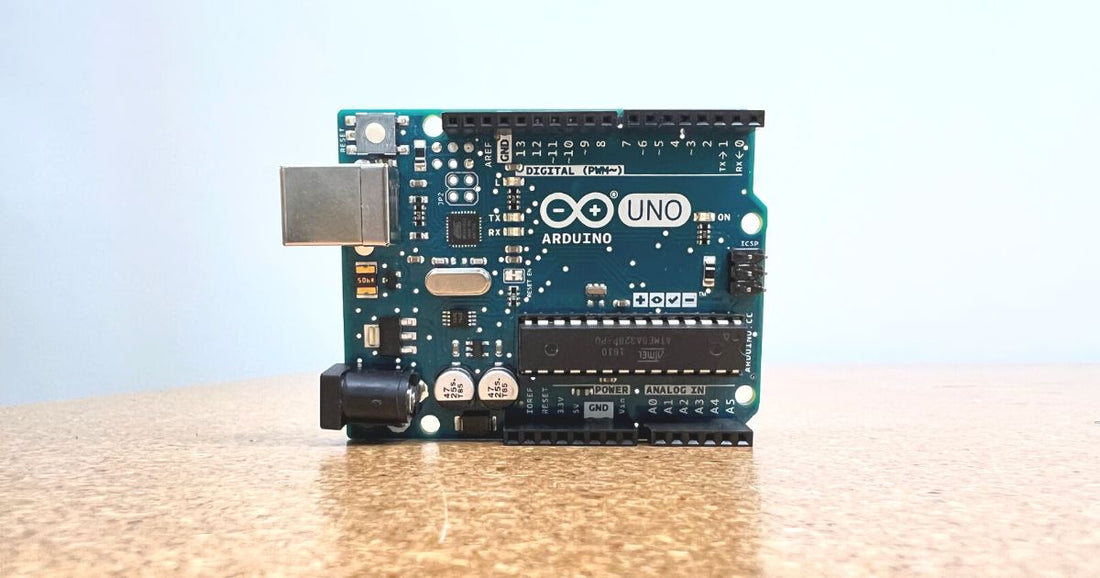
Arduino is an open-source project that created microcontroller-based kits for building digital devices and interactive objects that can sense and control physical devices. Common applications for Arduino microcontrollers include measuring CO2 indoors, in grow rooms, and in fish tanks.
Our engineering team has written Arduino code for CO2 gas sensors to connect the Arduino Uno, Mega or Mega2560 microcontrollers with several of our most popular CO2 sensors.
Arduino UART Interface to K-30 Sensor

The Arduino UART Interface to K-30 Sensor and included source code (zip) gives you step by step instructions for connecting a SenseAir K30 CO2 sensor using an industry‐standard UART TXD‐RXD connection. Wiring diagrams are included.
Note that the same code for the K30 should work on all the Senseair K-Series sensors. However, not all the variations have been tested.
In addition, we have instructions for connecting the K30 to Arduino via I2C and included sample code.
Arduino Code for S8 Sensor
Many clients use our Arduino UART examples and Arduino source code to connect the industry-standard Senseair K30 sensor to Arduino boards. However, these examples were all created before the SenseAir S8 CO2 Sensor was developed. So we were surprised when a client recently wrote us:
"To my surprise, the script you give for the K30 sensor works out of the box with the S8! Why don't you mention it in the app note? Had I known that from the start, I wouldn't have bothered you about which sensor to buy."
What are the advantages of the S8 CO2 Sensor?

The S8 Miniature CO2 Sensor is the smallest non-dispersive infrared (NDIR) sensor on the market today. Due to its optical path design, it can accurately measure carbon dioxide levels up to 2% with extended range measurement up to 3.2% by volume and a second option of 1% (0-10,000 ppm) for lower concentrations. Unlike the K-30 sensor which is designed to report CO2 levels in real-time, the S8 is designed to be used as a carbon dioxide safety switch. During normal operation, the sensor measures ambient CO2 concentration and compares the result with a user-programmed high-level set point. If high CO2 levels are detected, a programmable open collector circuit outputs a logic OR alarm.
Arduino UART interface to GSS ExplorIR Sensor

The Arduino UART interface to ExplorIR Sensor (formerly CoZIR) and included source code (zip) gives you step by step instructions for connecting to the GSS ExplorIR sensors using an industry‐standard UART TXD‐RXD connection. Wiring diagrams are included.
Amphenol TelAire T6713 CO2 Sensor Arduino Code

Amphenol's TelAire T6713 2,000 ppm Miniature CO2 Sensor combines proven NDIR technology with small size and low power requirements. It is ideal for applications where CO2 levels need to be measured and controlled for indoor air quality and energy saving applications such as demand control ventilation.
You can view the setup instructions or the source code here.
Amphenol TelAire T6613 Sensor Arduino Code
 Amphenol's TelAire T6613 CO2 Sensor module is one of the most successful OEM CO2 sensors ever made, with millions in use worldwide. It is most commonly found in commercial and residential wall-mounted CO2 transmitters for demand-controlled ventilation (DCV).
Amphenol's TelAire T6613 CO2 Sensor module is one of the most successful OEM CO2 sensors ever made, with millions in use worldwide. It is most commonly found in commercial and residential wall-mounted CO2 transmitters for demand-controlled ventilation (DCV).
You can view the setup instructions or the Arduino source code here.
Arduino Code for CO2 Gas Sensors Experts
For more information regarding Arduino UART interface and how it works with our sensors, contact us today. We are happy to answer any questions you may have, and provide any helpful information we can.






